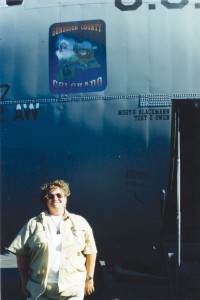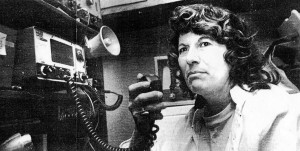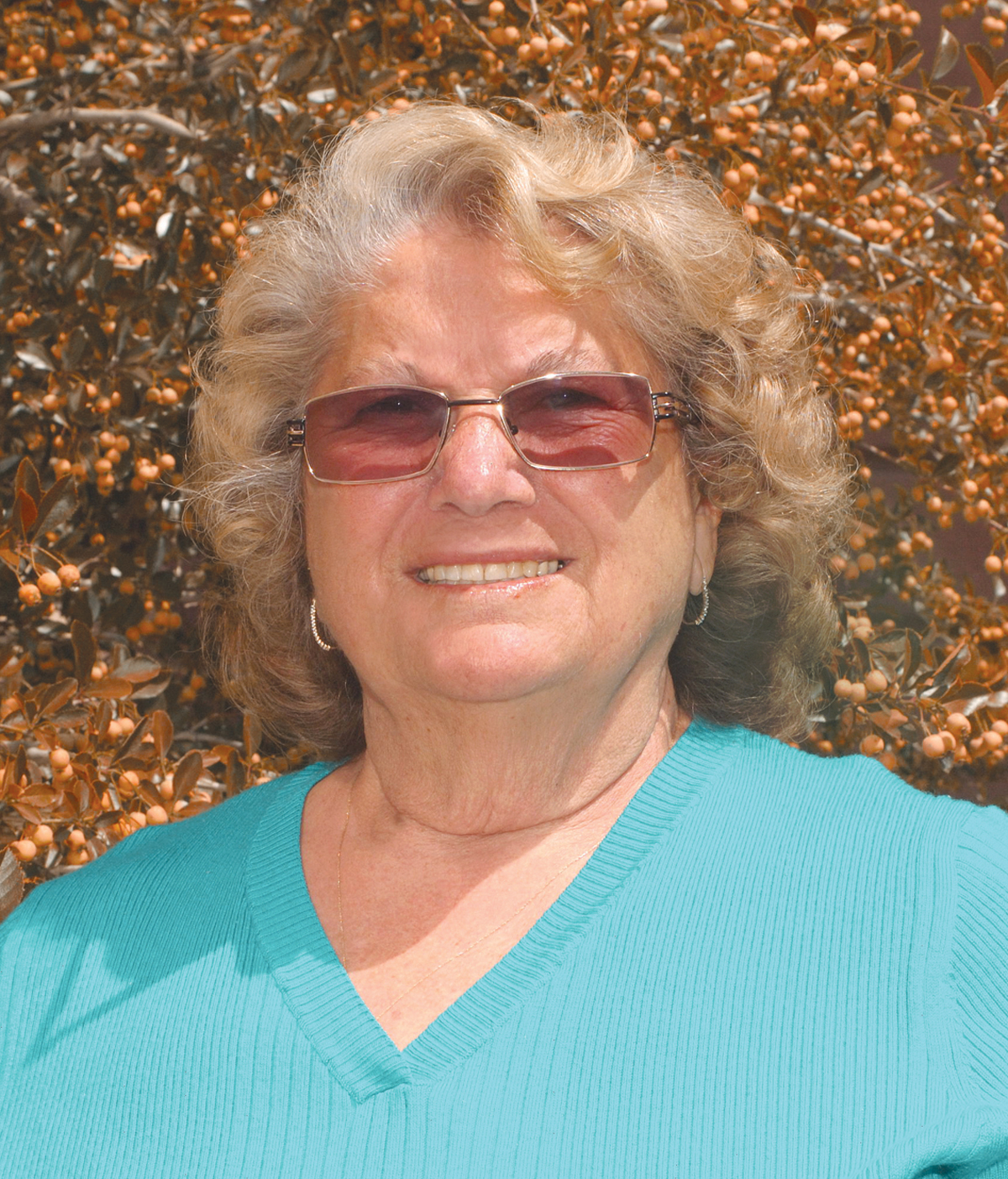By Deb Smith

At 70, Jo Ann Stone is still going strong, serving as the coordinator for Western Regional Homeland Security.
In Gunnison, Colo., Jo Ann Stone is practically a legend. If you haven’t met her, worked with her, flown a search and rescue mission with her—or been found in the snow by her—then you’ve probably heard her name, at least twice.
It’s not so much her notoriety that has made Stone a staple among Colorado’s growing aviation community. It’s really been her remarkable ability to overcome adversity and pull together the right people and resources to get the job done—whatever that job may be.
Jo Ann Stone began life in Colorado in the spring of 1936, in Salida. Her birthplace, known for its heavy mineral concentration, as well as the surrounding area, would soon become a hotbed of activity for anxious explorers, miners and, eventually, railroad expansionists. And with them, they brought much-needed jobs to the region.
With a rapidly growing family, her father knew he’d have to pursue more flourishing prospects in order to keep bread on the table. In 1939, he accepted a position with a mining company, and 3-year-old Jo Ann and her siblings made the move to nearby Cañon City, Colo.
A rough start in a new town
It was 1941, and the family was just settling into their new life. It was also growing. Eventually, Jo Ann would have 11 brothers and sisters.
The world listened as the bombing of Pearl Harbor put the United States right into the middle of World War II and young men were called to military service, including three of Jo Ann’s older brothers.
“During that time, there was also a big polio epidemic in Colorado,” she recalled. “It pretty much had everyone scared to leave the house.”
Although the late 1930s and early 1940s were considered to be promising years for medical breakthroughs, polio was still a mystery. The U.S. had seen its first big epidemic in New York in 1916, and it left a dismal image on the psyche of the American public.
Attempts to control the spread of polio largely involved the use of isolation. Although the practice was ineffective, it was continued for decades. Her family experienced it firsthand when one brother succumbed to the disease and another was left paralyzed.
“Our family was officially quarantined,” she said. “We couldn’t leave the house to work, to go to school, or to get groceries. We would’ve starved to death if it wasn’t for the kindness of the Mormon Church and the Freemont County sheriff.”
She explained that food was left on the porch, since the good Samaritans were afraid of contracting the disease themselves.
“They’d knock on the door, and we’d wait for them to get in the car and leave,” she said. “Once they were gone, we’d go out and get the food.”
You’re in the Army now
By 15, Jo Ann had met and married Bill Stone, a handsome soldier assigned to the 537th Field Artillery at Camp Carson. They met by chance at a party through a mutual friend.
When asked if it was love at first sight, she’s quick to answer, “No.”
“Actually, the first time I saw Bill, he was dating one of my best friends,” she said. “Then about two days later, he dated me. … He had the most beautiful blue eyes.”
She confessed they were married less than a month later.
“Back in those days, relationships were formed really fast because kids were dying—the Korean War and all,” she said. “They were going off to war and not coming back. So it was very common to just meet someone and then, right away, you were engaged.”
In spite of the abbreviated courtship, she knew Bill Stone was the one.
“I knew he was the one for me, because he was so patient with me, no matter what I did wrong,” she said.
In fact, shortly before he popped the question, she had wrecked his beloved 1939 Ford.
“I was using his car while he was at camp,” she recalled. “I was only 15, and wasn’t even old enough to get a driver’s license. I tore it up; I hit another car.”
After he saw what had become of his pride and joy, his first words to her were simply, “Are you OK?”

Jo Ann Stone, pictured in a 1982 photo taken by Grand Junction Sentinel photographer Bob Sibernagel, has helped save the lives of more than 200 individuals for almost half a century through search and rescue efforts.
“About then I decided that he was probably worth keeping,” she chuckled. “We went together for 28 days and then got married. We would’ve got married sooner, but the car was broke!”
Married life seemed to set well with Jo Ann Stone. Being on her own with her new husband was a welcome change from living with a houseful of siblings. There was more room, no waiting for the bathroom and the house was far more quiet.
As she began to “nest” in their new home in Colorado Springs, one night she thought it might be nice to surprise her husband with an extravagant homemade dinner. Young Bill Stone only made $127.10 per month in the Army, but she decided to splurge.
“I bought round steaks,” she said. “I cooked this really big, expensive dinner, set the table and waited for Bill to come home.”
She waited, and waited. The surprise was actually on her.
“Around 8 p.m., I got a call from the first sergeant, who told me that Bill wouldn’t be home for several days because he had been deployed to St. Joseph, Missouri, on flood duty,” she recalled.
Breezing through the “Sooner State”
Bill Stone was honorably discharged from the U.S. Army in 1953. Seeking a new start, the couple moved from Colorado Springs to Ponca City, Okla.
There, she gave birth to two sons. Her husband started his apprenticeship with Casemore Plumbing, owned by William J. Casemore, an influential Oklahoman who also served as Ponca City’s mayor.
“We loved the area and we loved the people, but we just hated the humidity and the heat—not to mention all the tornadoes,” Stone said.
She recalled the infamous twister of May 25, 1955, which ripped through nearby Blackwell, Okla. It was the 11th most deadly tornado in the history of the state, according to the National Weather Service, rated at an estimated F-4 on the Fujitsu Scale.
But when her father suffered a heart attack in 1957, she knew she needed to go home.
“We moved back to Cañon City to be closer to him,” she said.
Bill Stone picked up work with a local plumbing company.
‘That company had a plumbing long-term contract for installations in 14 houses in Gunnison,” she said. “We moved over there while Bill worked, and when the contract was done, we just decided to stay.”
In 1960, Bill and Jo Ann Stone, who would soon welcome a daughter into the family, bought a home along the Gunnison River. The Stones still live there, with their little dog, Rambo.
“It’s an older home built back around 1900,” guessed Stone. “We’ve fixed it up, repaired it, and added on to it. We’ve even threatened to tear it down and build a new one, but I have two granddaughters who just become hysterical when I even mention the thought of it. I told them we’d keep the home, but when it falls in on us, they have to come dig us out of the rubble.”
Finally—girl meets plane
Stone’s first chance to fly came in the form of a date with a boy name Bill Yeltson.
“He’d been taking flying lessons at Fremont County Airport,” she said. “I turned him down because I was so afraid.”
Her admirer went on to attain the rank of colonel in the Air Force and became a distinguished member of the leadership team at NORAD. As for Stone, in 1964, another chance would once again bring her closer to the inside of the cockpit. By that time, she and her family had settled into their lives in Gunnison, and Bill Stone had a growing plumbing business.
“Bill did a plumbing job one day for this guy who had a bunch of CB radios,” she recalled. “He wanted to trade out a couple of radios on his bill. We thought it might be a good idea, because we needed a way to contact our plumbing trucks.”
Subsequently, the Stones joined the local CB radio club. Fate would soon make its presence known. An unfortunate plane crash near Monarch Pass that year found the Stones, and their new radios, on the job.
“The sheriff called and said they needed all the help they could get and asked us, since we had radios, if we could come and help them look for survivors,” Stone explained. “We did. Right then and there, August 15, 1964, we formed the Monarch Search and Rescue team.”

One of Jo Ann Stone’s crowning achievements was to engage the Air Force Reserve as a partner in local search and rescue efforts.
Subsequent crashes and lost hikers would find the Stones and their radios even more involved in helping others. By 1966, Monarch Search and Rescue had morphed into the first senior squadron for the Civil Air Patrol.
That year also put the couple in a small plane for the first time.
“My first ride was on a CAP mission in Alamosa,” recalled Stone. “Bill and I were working a ground search for a plane that was lost. The CAP needed (aerial) observers in order to fly their missions and there weren’t enough to go around.”
With three aircraft grounded because of lack of observers, the Stones agreed to go up.
“We didn’t really want to fly, but we just couldn’t stand by and keep the planes grounded for something like that,” she said.
They both swallowed hard and crawled inside the small plane.
“We flew with Richard Rooney from Denver,” she explained. “He was a crop-duster by trade. I later found out he was one of the wildest pilots in the CAP. But he was very considerate and told us where the bumps would be and what to expect—and he was really impressed with my vision.”
Stone grilled him before takeoff.
“How many hours do you have? How low do you fly?” she snapped.
A bewildered Rooney turned to her and simply said, “Look lady, do you want to talk, or do you want to fly?”
“Flying that day was a big thrill for me,” said Stone. “It was such a big thrill that I started dreaming about it. I’d wake up in the middle of the night and ask Bill, ‘Which airport did we just land at?'”
He knew her condition was terminal. She had to fly. For their 15th wedding anniversary, Bill Stone presented his bride with a share in the local flying club’s Cessna 172 and several prepaid lessons.
With nine hours of training under her belt, 30-year-old Jo Ann Stone was told by her instructor, Jack Fisher, that she was ready to solo.
When Fisher told her she could go by herself, if she wanted to, she asked if he thought she really could do it.
“Yeah, I think you can,” smiled the instructor.
“I took off and the plane was vibrating very badly,” she said. ‘It was so bad, I though that perhaps the wheels were still spinning. I looked down and it was just my knees knocking together. … But it was such a feeling of power to be up there. I knew this plane was up in the sky and nobody did this but me!”
The rest is history
To date, Jo Ann Stone has participated in more than 4,000 CAP missions across western Colorado. She shares the credit with others for saving the lives of more than 200 individuals. But her missions weren’t always cause for celebration.
“The first 11 people we brought back were dead,” she said. “We were so afraid of getting the reputation of being coroners, rather than search and rescue.”
Stone, who was inducted into the Colorado Aviation Hall of Fame in 1997, is responsible for countless general aviation safety improvement made on the Western Slope, including the much-needed installation of a UNICOM at Gunnison-Crested Butte Regional Airport (GUC). A very active community volunteer, she attained the rank of lieutenant colonel in CAP and continues to demonstrate her exceptional leadership and emergency management skills as the coordinator for Western Regional Homeland Security.
While Stone doesn’t fly much anymore, she does keep her fingers in the pot by serving as mission coordinator for search and rescue missions, as well as providing expert testimony in cases involving aircraft accidents.
Because of her work with wildlife feeding, governmental agencies, county sheriffs, civil defense and many other city, county and state groups, Stone was named Gunnison County Citizen of the Year in 1991. She was also honored as the CAP Frank G. Brewer, Senior Member of the Year Award Recipient in 1994 and the Gunnison County Pioneer of Aviation in 1996.
An additional notable award she received in 1985 was the “Nine Who Care” designation sponsored by KUSA-TV Channel 9.
Stone served as director for air shows at GUC from 1992 to 1996, introducing aviation to the public and to the youth of her area. Flying is safer and the facilities are better for her leadership in Western Colorado.











